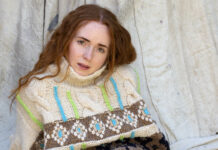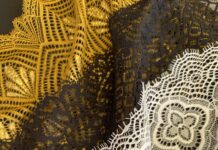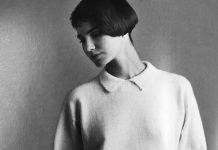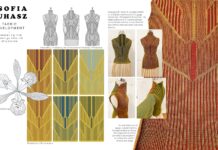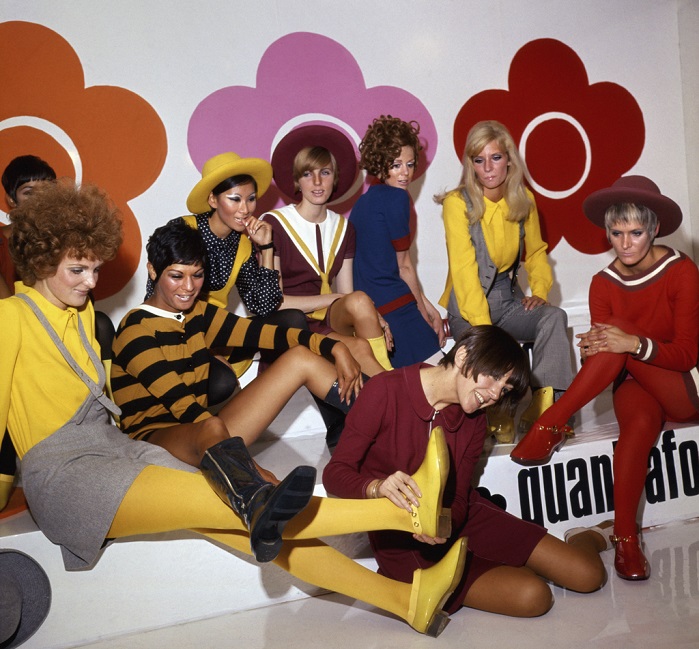
The important exhibition, Mary Quant, sponsored by Kings Road and curated by Jenny Lister, at London’s V&A Museum runs until 16 February 2020. It looks to rectify a gap in recognition of one of Britain’s most influential designers by showing the importance and originality of truly iconic Quant designs. They led to ground-breaking manufacturing practices and marketing aimed at young women, letting them wear the trousers, literally. It draws on Dame Mary’s own archives as well as public reminiscence and fashion media.
As the plans for a retrospective of the work of the designer Dame Mary Quant began to take shape a couple of years ago, many were surprised that there had not been a substantial tribute before. It was felt among many in the trade that her profile was not as high as some of the designers who came into view up to a decade later, and who owed much to her ingenuity in shaping the vibrant scene of the 1960s as an architect of Swinging London and a major influencer of her time, who created a global brand. The project was advised by Heather Tilbury, herself a well-known doyenne of the textile trade, and as a Director of Mary Quant Limited, leading Press relations and Marketing, at the hub of the ground-breaking fashion empire.
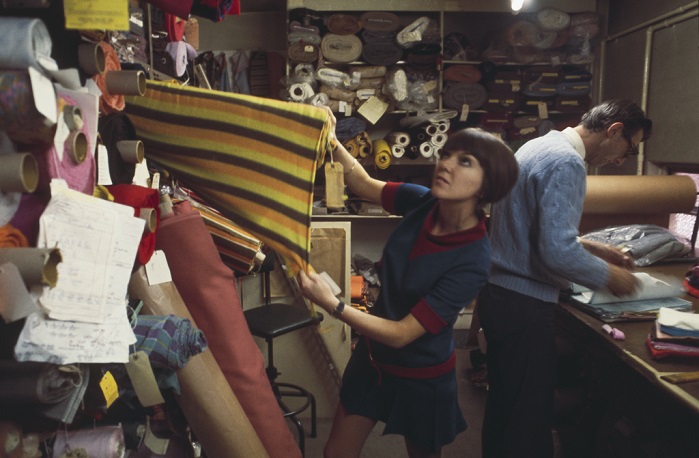
Quant and her designs have not been forgotten by her customers, proved by upwards of a thousand responses that the Museum received to a call-out for original garments; hashtag WeWantQuant. They were trawled through by V&A curators and whittled down to 35 objects. Treasured items of clothing, from 50+ years ago, encompassing tailored jackets to funky shifts, are displayed with their owners’ comments and photos. Miniskirts, menswear looks, branded accessories, athleisure, bold geometrics and bright fun prints run through the exhibition and look completely contemporary today.
From South London with Welsh parents, Mary Quant was part of the optimistic post-war generation of young people revelling in the freedom, exuberance and colour which was just appearing in London as she studied at Goldsmiths College. Her talent for dress-making, fabrics and experimentation led her to open a small unstuffy, customer-friendly shop Bazaar in the King’s Road, 1955.

Satin mini-dress and shorts by Mary Quant, photograph by Duffy, 1966. © Duffy Archive
Mary started gathering stellar customers in the exploding pop and trail-blazing arts and restaurant scene. “She was absolutely in the vanguard of the whole Chelsea/Kings Road movement, she socialised with artists, writers, architects, designers models, photographers etc, all of whom were pushing the barriers in their own fields,” commented Heather Tilbury.
The exhibition shows the range of Quant success, gleaned from 20 years of designing. The most recognisable are from the 1960s; minis and eye-catching shifts, in black and white and later in ‘psychedelic’ colours. Newly empowered teenagers and young women could wear patterned trousers, tailored jackets, menswear shapes and shiny plastic macs in bright primary colours, Liberty florals and geometrics, with a huge range of options.
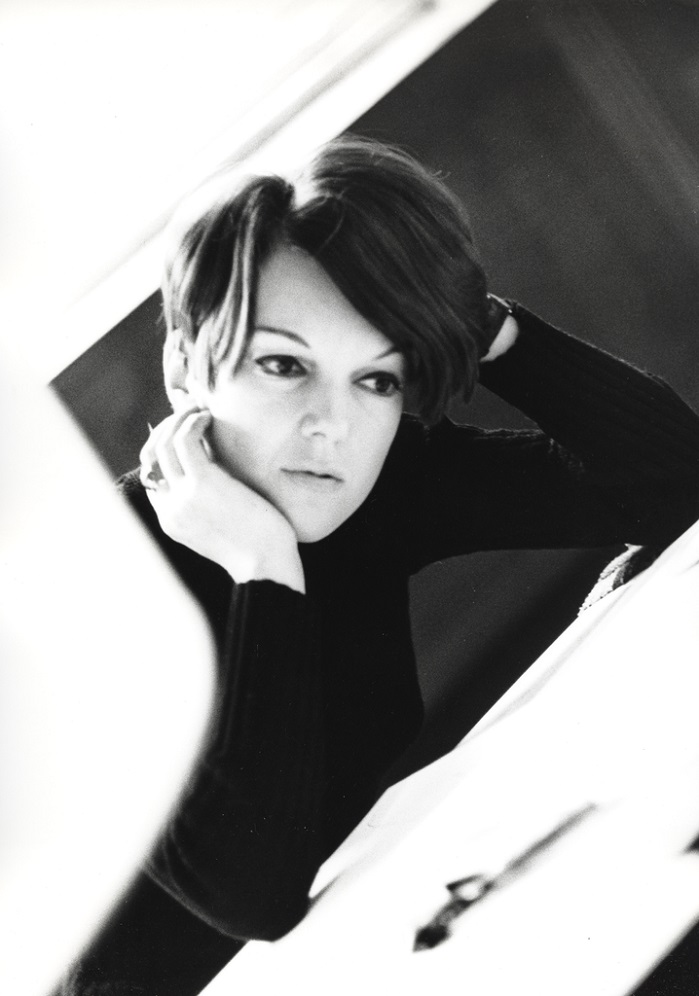
Mary herself became an instantly recognisable icon with her dark, dramatic short hair, straight fringe cut for the cameras by Vidal Sassoon, as photographs at the exhibition show. Her ideal models included such names as Twiggy and Jean Shrimpton, both typifying the Quant image of youth, fun and beauty, complete from head to toe.
Mary Quant and husband Alexander Plunket Green recognised the potential of marketing their mass-produced yet high-quality product to a wide audience with a range of price-points. Plunket Green was the urbane, charming front-of-house for journalists who popped in to talk to Mary Quant and he had his finger on the pulse of the clothing trade. The clothes became the height of fashion. There followed children’s merchandise, accessories and household goods, with the Daisy motif featuring as the symbol to tie them all together.
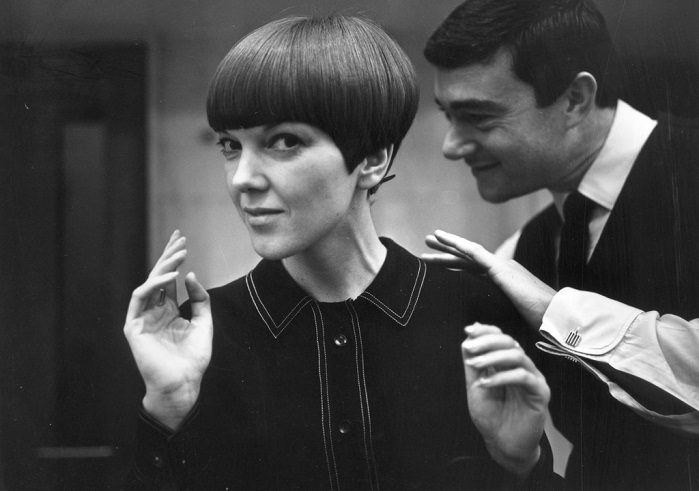
Dumont/Stringer/Getty Images
The Daisy motif was one of the first to be targeted at young women and girls, for a large range of goods. Hard-up student customers could soon buy a single mascara by Mary Quant, shot with sophisticated photography for posters like the one in the exhibition, or purchase a pair of daisy-printed tights and underwear to go with revealing minis – the skirts as well as minicars – featured in ads in the exhibition. Little and bigger girls could buy Daisy dolls, with a complete wardrobe of Mary Quant styles to dress them. Quant cosmetics with funky packaging were publicised with its own promotional bus. Using her own cool image, led to Quant gaining an international reputation with high profile visits to the USA, making her a recognisable icon of her time.
Talking with colleagues at the Press Preview, the first thing which comes to mind when people are asked about Mary Quant is the miniskirt. Although claimed by others, including Courreges and couture designers, it is generally accepted that Mary Quant first brought ever-rising hemlines to public consciousness. Those who were penniless students in the 1960s recalled taking the scissors to their dresses every Friday night before they went out, making them shorter each week. Others made the point that the invention of tights was crucial, made in colours and patterns by Mary Quant, who is credited as embracing the concept of Lycra legwear, with a huge boost to the knitwear industry in the UK.
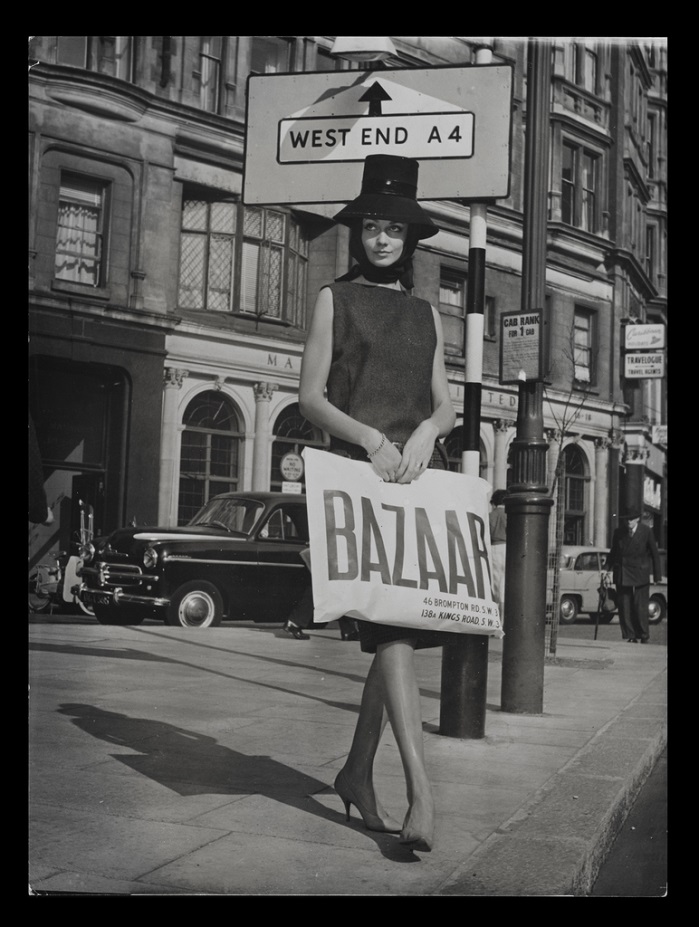
Model holding a Bazaar bag c.1959 © Mary Quant Archive
Mary Quant had her ear to the ground. In the time of the first appearance of ground-breaking pop groups, greater leisure and youth culture, she led with clothes which looked forward. Perhaps one of the most important things she put in train was to purposely seek out manufacturers, from the South of England to Cheshire, Leicester and Scotland to mass- produce her designs. This is seen at the exhibition in a documentary film made in the 1960s showing how she worked with factories to develop ways of pattern-cutting and sewing to replicate tailored designs, the simple lines appealing to fashion followers, and lending themselves to all manner of manufacturing, embracing both knits and woven fabrics. She also produced Mary Quant design patterns for home dressmaking, further reaching the general public.
Fabrics were used in new ways, designs included colourful jersey separates and dresses designed for the ‘swinging London’ look with jacquard patterns, bold prints and flashy wet-look macs, the latter not well received at first by some fashion editors.
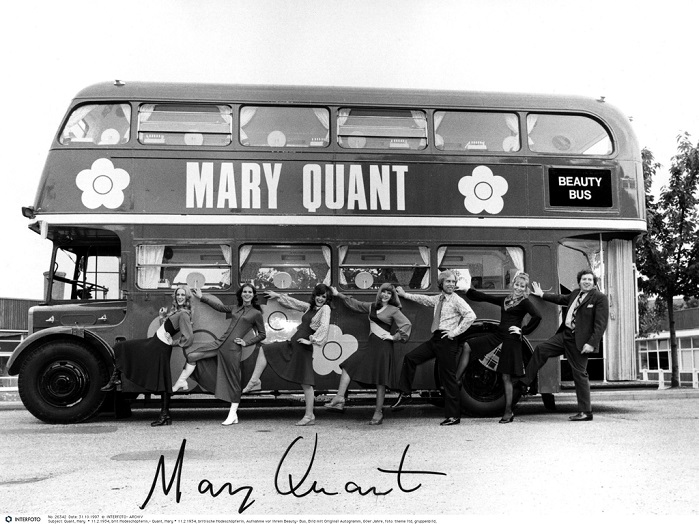
Heather Tilbury explains: “She loved fabrics of all types and experimented with bonded jersey, PVC and subsequently man-made fibres which added a different dimension from the traditional tweeds, worsteds, flannels, boiled wool, Liberty prints etc which she sought out and also loved. One of the reasons her licence with ICI Fibres was so successful was that she embraced the attributes of polyester when mixed with cotton and other natural fibres; originally, she liked working with traditional menswear fabrics but also the contrast of feminine prints, seersuckers, crepe, jerseys and so on. She always felt that it was the fabrics that were the important cornerstone of any collection.”
Challenging stuffiness, embracing the new and shaking the rules were the attitudes that give Mary Quant her lasting legacy. Driving and reflecting social change, her view of fashion was not just for *Debs and journalists. She tapped into the freedom being enjoyed by young women in their iconoclastic attitudes to modern life. The V&A exhibition reflects these elements and her design talents to today’s audience, possibly for the first time. It is well worth a visit by the trade as well as the public.
*Debutantes, high class young ladies presented to the Queen at their coming of age

Subscribe To Our Newsletter
Join our mailing list to receive the latest news and updates from our team.









